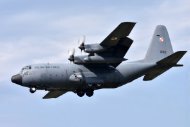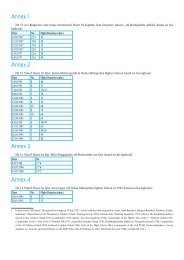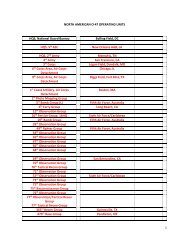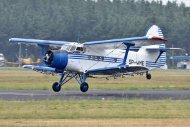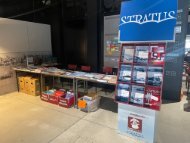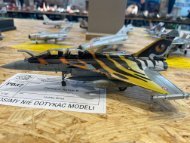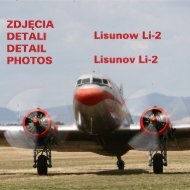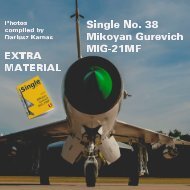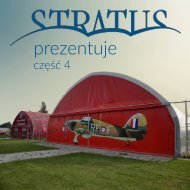B-17 CC Additional Material by Robert M Stitt
Boeing B-17 Fortress in RAF Coastal Command Service Second Edition Robert M Stitt Additional Material
Boeing B-17 Fortress in RAF Coastal Command Service
Second Edition
Robert M Stitt
Additional Material
- No tags were found...
You also want an ePaper? Increase the reach of your titles
YUMPU automatically turns print PDFs into web optimized ePapers that Google loves.
Flt Lt Archibald ‘Arch’<br />
Dunne flew 75 hours over<br />
48 missions on Lockheed<br />
Hudsons while based at Port<br />
Mores<strong>by</strong> with the Special<br />
Transport Flight. He is<br />
pictured at Darwin on June<br />
3, 1942, seven months before<br />
the rescue mission to Wau.<br />
(Australian War Museum<br />
neg. 012436)<br />
rageously insisted on staying at his post until he had released the bombs. The<br />
navigator, Peter Hudec, then pulled Cole away from the nose and attempted to<br />
block the catwalk so Cole could be shielded from the roaring wind.<br />
After completing the run, the crew of 41-9234 found themselves separated<br />
from Thompson’s Fortress and any mutual protection it could provide. Without<br />
fighter escort they had to fight their way out of the target area on their<br />
own, surrounded <strong>by</strong> a swarm of Japanese fighters and with two failed engines.<br />
Hoggan relates their retreat from Lae. “We counted up to 20 fighters but just had<br />
to sit there, shouting directions at the gunners while lumbering along in our unescorted<br />
bomber. Lloyd DuMond in the upper turret was hit <strong>by</strong> a shell on the back<br />
of his head and stopped shooting. Dau shouted, ‘What’s wrong?’ DuMond said,<br />
‘I can’t see… I’m blind… I’ve been scalped!’ Dau shot back, ‘Well put it back on<br />
and start shooting. If you can’t see, I’ll tell you where to point the guns!’”<br />
The running battle with the Japanese fighters continued for several minutes<br />
as 41-9234 headed south towards the Bulolo Valley and the Australian outpost of Wau. Dau’s gunners<br />
later claimed four enemy aircraft destroyed though they received credit for only three, one <strong>by</strong> waist<br />
gunner Henry Blasco and two <strong>by</strong> tail gunner Henry Bowen. “But it was the flak over Lae that brought<br />
us down,” recalls Hoggan, “not the attacking fighters.”<br />
Refuge at Wau<br />
Looking out to his right at the failed number 3 and 4 engines, Hoggan asked Dau if he should feather<br />
the propellers. “Ray said, ‘If the fighter pilots see the props feathered they’ll know our critical condition’.<br />
So we let them windmill. The fighters stayed with us but eventually dropped back out of shooting<br />
range.” Dau then attempted to feather the number 3 and 4 propellers but was only successful with the<br />
inboard engine. “With each ridge the aircraft got closer to the ground. We could maintain altitude but<br />
not climb. Ray was as cool as one could get… he made light of any crisis and was a superb leader. He<br />
asked for everything to be thrown out but was still not satisfied as the aircraft would not climb on two<br />
engines. He sent me back to check and I found everything including guns and ammunition boxes, had<br />
been jettisoned. I had just got back to the cockpit and sat down and was looking down at my lap strap<br />
to tighten the buckle when Ray said, ‘We’re going in!’”<br />
The stricken bomber came to a stop in less than 200 feet (60 m) as it ploughed up a 20° slope, slewing<br />
90° to the right in the process. The sideways skid caused the fuselage to fracture at the front and<br />
rear spar attachment frames, the nose bending to the right while the rear fuselage was torn open on the<br />
port side at the front end of the radio compartment and wrenched though 45°, also to the right. Ripped<br />
from its mounting, the unoccupied ball turret rolled down the side of the ridge.<br />
Without shoulder harnesses, pilots Dau and Hoggan had their upper bodies snapped forward on<br />
impact, striking their heads on the instrument panel shroud – in the nose, Albert Cole was thrown<br />
forward against the bombardier’s chair and somehow threw himself out of a front window. The rest of<br />
the crew had moved to their crash positions in the radio compartment but <strong>Robert</strong> Albright was unable<br />
to secure himself prior to touchdown and was badly hurt. Rear gunner Henry Bowen had been gravely<br />
injured <strong>by</strong> the attacking Japanese fighters.<br />
Australian soldiers based at Wau witnessed the crash-landing and, with the help of local villagers<br />
placed five of the nine aircrew, including Cole, Albright, Blasco and Bowen, on stretchers and headed<br />
back down the trail to their camp – sadly, Henry Bowen died during the trek.<br />
Mercy Flight<br />
Word had already been sent to Port Mores<strong>by</strong> that the crew needed immediate medical attention but<br />
little could be done until someone could get through <strong>by</strong> air. Port Mores<strong>by</strong> was only 250 miles (400 km)<br />
away but a rescue operation across the Owen Stanley Range to Wau in the prevailing poor weather was<br />
<strong>by</strong> no means a simple task. Fortunately, the right person to lead such an mission was currently based at<br />
Port Mores<strong>by</strong>, Australian pilot Flt Lt Lieutenant Archibald ‘Arch’ Dunne.<br />
Dunne had flown commercially in New Guinea prior to joining the RAAF at the start of the war<br />
and was familiar with the demanding flying conditions around Wau. At the time of the crash-landing<br />
he was flying Lockheed Hudsons with the Special Transport Flight, a detachment of No. 1 Operational<br />
Training Unit tasked with flying resupply missions from Port Mores<strong>by</strong> to Allied troop outposts in New<br />
Guinea. “When we received word that a B-<strong>17</strong> had crashed, the number of casualties was not known. I was<br />
asked to try and get in there on January 9 because I knew my way around the area and it was almost impossible<br />
to take a group of aircraft in at that time of day. However, I couldn’t find any sort of break as the whole<br />
area was ‘socked in’, normal for New Guinea in the late afternoon. So early the next morning, January 10,<br />
I led a group of Hudsons to Wau in perfectly clear conditions.”<br />
10



